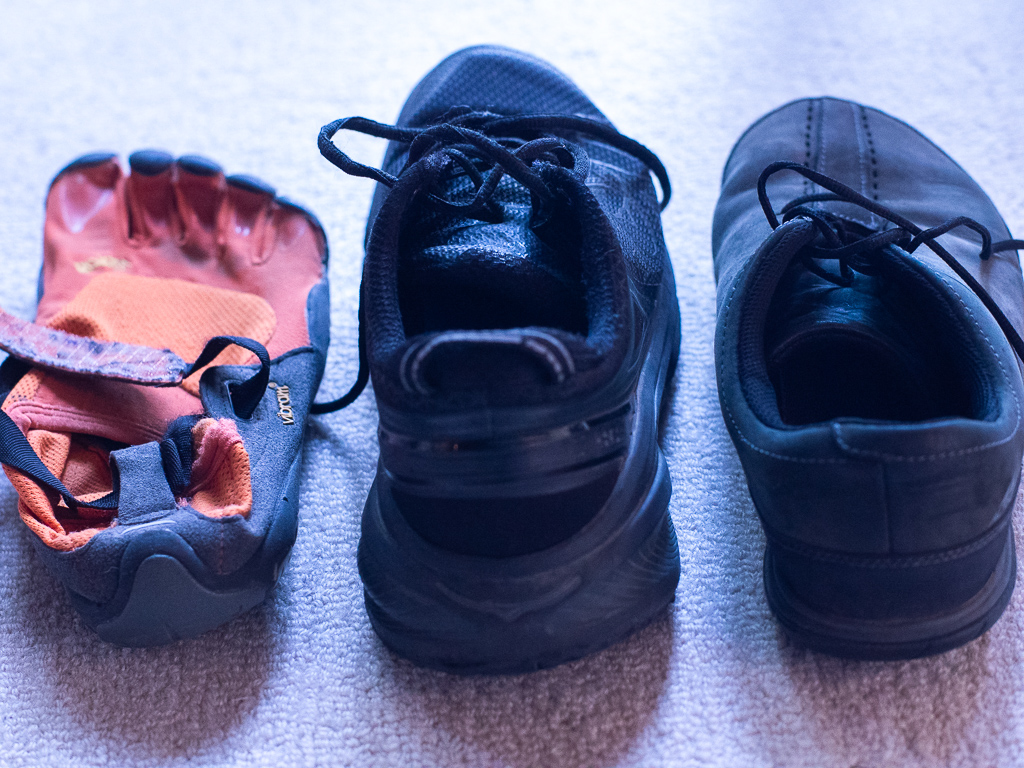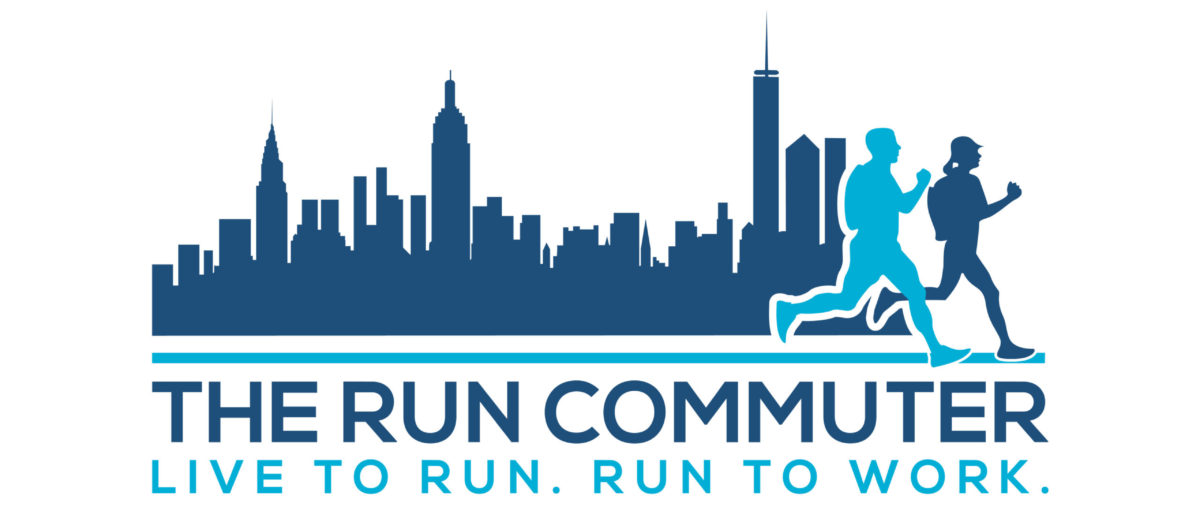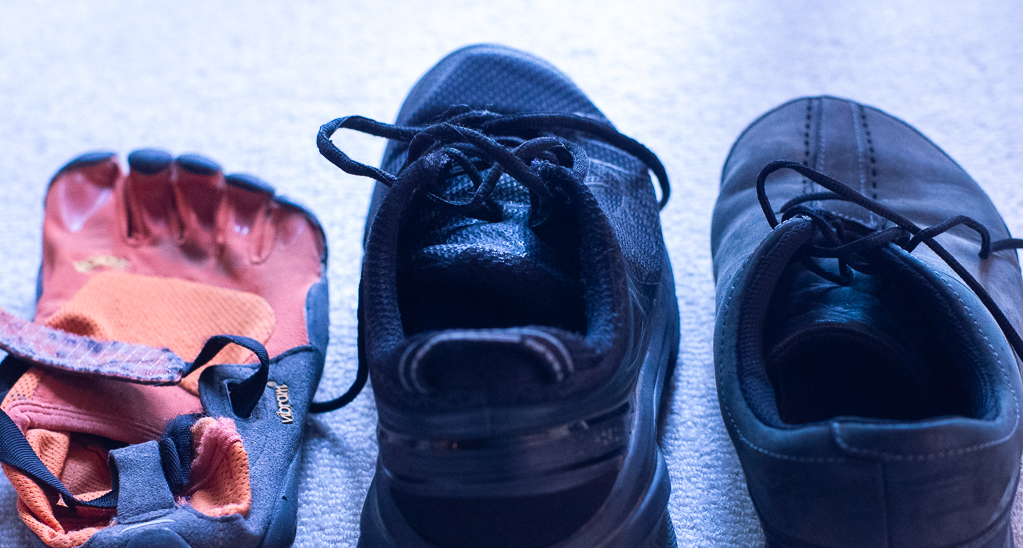I have tried many types of shoe: minimalist, maximalist, and zero drop. I share thoughts here, with the clear disclaimer that I am not an expert and I was not systematic with experiments. I have read a bit, however, and it seems there is such significant variation in feet, strides and running form in general, foot strike in particular, and other factors, which likely accounts for the range of results reported — even experts who have done experiments appear to conclude it is impossible to generalize. For once, the phrase “YMMV” (“your mileage may vary”) applies, indeed literally. Nonetheless, the internet allows crowdsourcing of opinions, and this is an opportunity to open a discussion among those of us who are friendly and interested.
As a runner, my shoes are paramount. I am enthusiastic about “sensible” shoes. I select them by criteria that are sensible: form, cost, and durability. In races, there are the competitors in suits carrying briefcases, even in formation, and those who capable of speeding by in stilettos. They earn respect even if we would not dare emulate them. For me, shoes are about function, not fashion. Their purpose is not to make me cool or hip or whatever adjective is the latest expression of sophistication. Long ago, I dated a woman who had a pair of sensible shoes that I said were “sexy.” They were clunky, for knocking around in, European in origin, and my friend regarded my aesthetics as idiosyncratic.
When I began running, or run-walking, in earnest, I was a fan of the minimalist shoe. I was among the early adopters, in part because I travel often and a pair of shoes so thin as to be like socks was convenient to pack. I had a half dozen pairs of Vibram Five Fingers. I even had the “dress” version with a suede upper. People knew me by them. They attracted curious looks before they became common enough.
My wife, however, said to me, “You need real shoes to run a race.” I am not always averse to her suggestions. I entered my first half marathon in 2015. I rummaged through the closet and found a pair of lightweight trail shoes I had not tried on in years. They fit fine. So they were substituted in. I finished the 13.1 miles in 2:51. That satisfied my humble goal of under three hours.
That was it for the minimalist shoes. They had had a benefit and a cost. Those were the same. I have become persuaded that, as in ancient Greek tragedy, our strengths are our weaknesses. The positive of the minimalist shoes is that they encouraged, if not enforced, a lighter landing. The negative is that I am by nature too much of a heavy stomper, so I always had a bit of pain along the outside of my sole after going the distance, anything over five miles, without padding. I wish I could pound less. The maxim “less is more,” attributed to Bauhaus architect Ludwig mies van der Rohe, has had its detractors, but the elegance cannot be denied.

All of the above shoes are size 11
I had read about the new trend of the maximalist shoe. A funny episode then occurred as if I had been intended by fate to switch. I was at the Santa Barbara airport, and I spotted a fellow with a backpack that had the Hoka One One logo. I asked him if the shoes were any good. He said they were great, and he would say that even if he didn’t work for the company.
Then I did something I normally do not have the guts for. I said, “Hey, how about a coupon?” The guy laughed. He said sure. I won’t mention more, to avoid motivating every reader trying to cadge a discount from strangers, (That particular gentlemen has moved on to another gig; I know, because I looked him up out of curiosity.) I can say that they made a loyal customer out of me. I promptly stocked up on a half dozen pairs as soon as I saw a sale.
I have a tendency toward obsessiveness. That is not unrelated to run commuting. I believe you need a certain determination to make it a habit. You have to make adjustments to your daily routine, and, more importantly, you need to cultivate in yourself the will to venture forth in the cold, the dark, and the rain — that isn’t self-praise, but self-criticism, because I know that by nature I am lazy, and I would rationalize an excuse if I didn’t goad myself. I also have veered from extreme to extreme. I am inspired by Henry David Thoreau. When the philosopher was a schoolteacher, he opposed the then ordinary practice of corporal punishment for students. The principal admonished him for being lax, so the next day he picked a half dozen of his charges at random, flogged them, and resigned.
I describe the maximalist shoe to those unfamiliar as what a clown would wear if he were to try a marathon. I must be six feet tall in these. They add height that looks comic and dangerous. But you adapt without effort. They are plush without sacrificing control. I run commute daily in a black pair, the plain color solid all around, rendering the footwear suitable for my office. I also run trails, including technical routes with significant vertical gain and steep descents. I have logged hundreds of miles in these designs (while Athlinks records me at 97 races, they do not have results for a few obscure events). They have become my favorite. They hold up better than expected. The mesh on top has failed before the soles have been tired out. Maximalism is easy. There are Hokas that eschew flamboyance despite the bulk.
Finally, I have a couple pairs of zero drop shoes, meaning the bottoms are flat as a pancake. My mother, a Chinese immigrant, was a much better cook than my father gave her credit for. She made magnificent dinners my brothers and I, trying to assimilate, turned up our noses at, with a steamed whole fish as the main course; and beef and broccoli with a broth for the rice, with less meat and more seasoning than the recipe called for, because she was frugal. But as an adult, I realized there was something wrong with her pancakes, maybe because she had an ideal of a much thinner, savory version, such as used to hold moo shu. Her pancakes were very thin and perfectly flat, with no fluffiness. That is an analogy. The zero drop shoes are that flat — you could line up a straight edge along them from heel to toe, and there would be no margin of space at any point along the length. The amount of cushioning is at the more minimalist than maximalist end of the scale. They probably would be awkward if they were any thicker.
The brand that popularized the style, Altra, has another distinction. They advertise how they are “foot shaped,” with a wide toe box. Everybody wants their shoes to be comfortable. I really, really, really do. Shoes that pinch, especially the toes, are all I am conscious of if I have had the misfortune of acquiring such instruments of torture. They become an obsession. No doubt it is a psychological problem of mine that shoes that become wet bother me so much that if I step in a puddle on the one side I have to soak the other side for the peace of mind that comes from symmetry. It is impossible to concentrate on any task if your feet hurt; it’s at the opposite end of the body, but it’s like a toothache, interrupting every instant, a constant bother.
The zero drop is interesting; the foot shaped box, wonderful. I probably need more experience with zero drop. My feet are fine on a run commute (4.5 miles), but they ache after a half marathon, and my calves have been stretched differently. The width for toes is great and I look for that extra room in a conventional last as well. As with minimalist and maximalist, the zero drop shoes affect posture. I have not taken measurements. I would bet a video taken with a runner on a treadmill would reveal running form changes with each type. The challenge is to determine what is optimal for each individual, given their body and other variables.
The truth is I am not that fussy. I read a complimentary review of the Saucony Kinvara shoes, and they were on sale. So I bought a couple of pairs to stash in the closet. I wear them for a break from routine; they are lightweight and fine. I appreciate a bit of variation, even if I generally follow habits, because it seems to promote thoughtfulness, and any time I consider running form I am glad.
I think about shoes quite a bit, because I do not want to be aware of them when I am running. I can say confidently that any moment I am conscious of my shoes when I am wearing them is not a good moment. Probably any run commuter ponders shoes. Other thoughts are welcomed.

